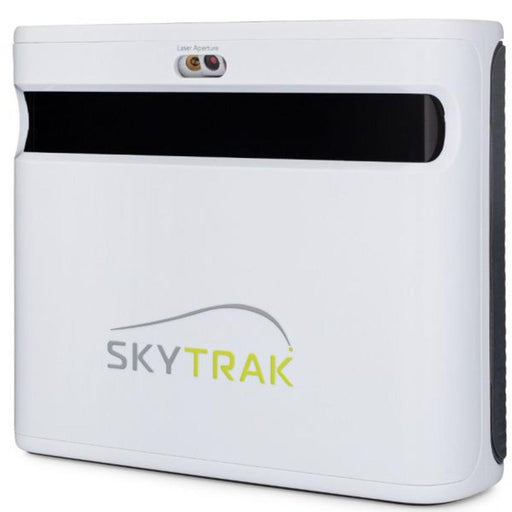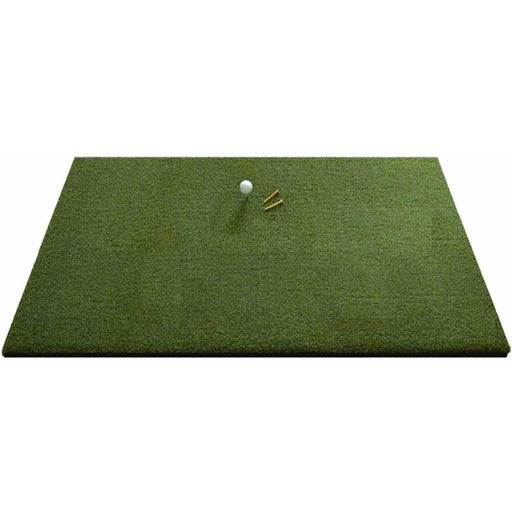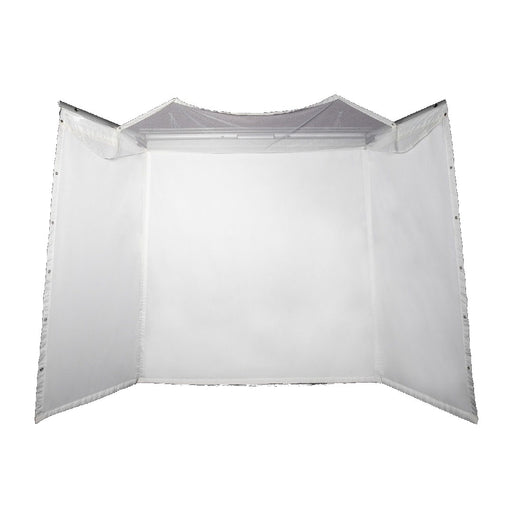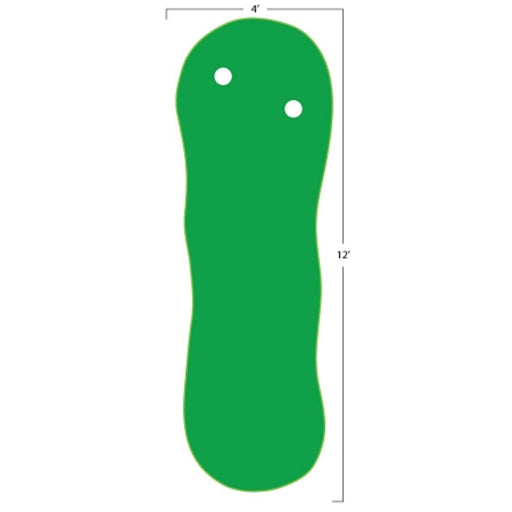Now through January 5th 15% OFF our very popular Vanish and Parlour Enclosures. Coupon code 15SWINGMASS

4 Steps for Choosing the Golf Simulator That Fits You Best
While we already have a buying guide that goes into detail regarding the many parts and pieces of a golf simulator, it can all be a little overwhelming for new buyers. We have put together these four buying steps to help out the buyers who are just starting to consider buying a golf simulator and don't know where to begin. By following these steps, you will be able to narrow down your options and find the simulator that is perfect for your home and needs.
While this list does not go into as much detail as our other articles (linked below), it will help you wrap your head around buying a golf simulator and what to look for when you do.
- Click here to read our comprehensive guide for Golf Simulators.
- Read our list of the best golf simulators in 2024.
In This Guide We Cover:
The 4 Steps for Choosing the Correct Golf Simulator.
The 4 Steps for Choosing the Correct Golf Simulator.
Follow these steps, and by the end, you should be able to narrow your options down to a handful of excellent golf simulator options that are perfect for your needs.
Simulators combine several different parts, and the components you choose should reflect your unique needs and wants.
Step 1: Identify your budget
The first step is to decide what you are willing to spend on a golf simulator. Options can range drastically; some of the cheaper options hover around a few thousand dollars, while high-end options like the Vista 12 Golf Simulator can reach upwards of $19,000. A standard price for an excellent middle-of-the-road simulator before getting into some niche add-ons is around $6,500 - $9,000.

Generally speaking, the larger your budget, the more features you can expect from your hardware and software. You may need to jump back and forth between step one and step two to decide which features are necessary and which are extras.
Step 2: Consider Your Needs and Goals
Golf simulators can do a lot more than simulate a basic round of golf. Today's simulators allow you to do everything from work through skill challenges, receive guided coaching lessons, compete online in tournaments against real players, and a whole lot more. Sit down and decide what your goals are, and which features will be required to accomplish those goals. Are you looking to have fun? Be a better player? Both? What do you want out of my simulator on a regular basis? These are the types of questions you should start asking yourself as they can heavily dictate which simulator is the best choice for your home or business.
Step 3: Finding the Proper Hardware
Golf simulator setups include a number of physical items, including:
- The Launch Monitor
- The Hitting Bay
- The Golf Mat
- The Projector
You will want to find the hardware that allows you to meet the needs you set in your previous step. For example, if you want to improve your chipping game, you will need to ensure that you get a launch monitor and golf mat that will allow you to simulate these types of shots correctly.
It is also worth noting that many of these hardware items can be improved and upgraded independently of the rest of the setup, meaning you can improve, tweak and customize your golf simulator setup quite a bit over time. Keep in mind that the projector and hitting bay of a golf simulator can double as a very large screen television/video monitor, which may also dictate the size you eventually opt for.
Measure Out the Size of Your Space
Different simulators will take up different amounts of room. The general minimum is about 10' long, 10' wide, and 8.5' high. Many golf simulators will need more room than that. Some of our larger hitting bays require up to 12' width and 9' height and 16' length of room space. At a minimum, you need enough room for a full swing (and then some) and space for the components themselves.
Also, keep in mind some simulators are more portable than others and can be relatively easy to take down and put away. Consider the level of permanence you want your simulator to have.
Choose a Launch Monitor and Sensor System
The launch monitor is the part of the simulator that captures and analyzes the data from your golf ball or swing. The better a launch monitor, the more accurate and precise its readings will be. The best software will often require very sophisticated launch monitors and sensor systems, so keep that in mind when choosing your software.
Sensor systems may consist of some combination of:
- sensor pads
- infrared light
- cameras
- radar
Some launch monitors work as standalone items with the ability to give you data and feedback when you are live on the course. This dual-usage makes it is worth investing a bit more into a quality monitor or launch system for many.
Browse our complete collection of Launch Monitors with Simulation Capabilities.
Choose a Hitting Bay
The hitting bay is the area where you will safely hit the golf ball. There are two types of hitting bays, the kind that includes a basic net but cannot be projected upon, and the kind that consists of an impact screen which is a screen made to be projected upon and made to deal with the impact of a golf ball. The larger the projected on hitting bay, the more immersive your experience will generally be.

Choose a Hitting Mat
The hitting mat is the surface on which you will place the golf ball. The better a hitting mat, the more realistically you will be able to simulate certain ground conditions while you play. You want to ensure the mat can fit in the area you require, is large enough for you to stand on and swing, and can include the launch monitor. Keep in mind that to provide an immersive experience, some simulator monitors come with a specially designed hitting mat.
Choose a Projector.
Just like traditional projectors, golf simulator projectors provide the image of the software you are running. There are a lot of considerations when it comes to choosing a projector, such as the picture quality, aspect ratio, placement, and more. You can find more details in our comprehensive guide for golf simulators.
Step 4: Find the Right Software
There are a ton of different software options out there for golf simulators. While some packages require specific programs, other setups allow you to choose from this diverse selection. The connected devices you are using will also dictate which software will be available. Are you using a PC? iOS? Make sure to check the compatibility between your devices and the software a simulator uses.
Ready to Find a Golf Simulator?
An indoor golf simulator for home is great for beginners and professional golfers. You can improve your game and enjoy yourself in the comfort of your home. You just have to choose the best simulator based on your budget and needs. Simply Golf Simulators offers the finest collection of Complete Golf Simulator Packages and individual simulator components. We offer guaranteed lowest prices, financing options, and free shipping. Browse our complete collection of Golf Simulators today!

Have Questions About Golf Simulators?
Our expert team is here to help you find the perfect golf simulator for your needs.
Featured products
-
SkyTrak+
Original price $2,995.00 - Original price $3,145.00Original price$2,995.00 - $3,145.00$2,995.00 - $3,145.00Current price $2,995.00Introducing the SkyTrak+ Launch Monitor: Unmatched Accuracy and Advanced Features Experience a new level of precision and innovation with the SkyTr...
View full details -
ProTee Majestic Simulator Package
Original price $9,618.00 - Original price $13,848.00Original price$9,618.00 - $13,848.00$9,618.00 - $13,848.00Current price $9,618.00ProTee Majestic Golf Simulator Package: Elevate Your Indoor Golf Experience Transform your home or business into a golfer’s dream with the ProTee M...
View full details -
Eagle Golf Mat
Original price $370.00 - Original price $1,130.00Original price $370.00$370.00$370.00 - $1,130.00Current price $370.00Introducing the Eagle Golf Mat: The Ultimate Golf Experience Are you passionate about golf and demand nothing but the very best in your practice eq...
View full details -
Retractable HomeCourse® Golf ProScreen 180
Original price $2,299.00Original price $2,299.00 - Original price $2,299.00Original price $2,299.00Current price $1,999.00$1,999.00 - $1,999.00Current price $1,999.00HomeCourse® Golf ProScreen 180 HomeCourse® Golf ProScreen 180 is a retractable golf screen and enclosure. HomeCourse® Golf ProScreen 180's ballisti...
View full details -
The Augusta V2 4'x12' 2 Cups
Original price $399.00Original price $399.00 - Original price $399.00Original price $399.00Current price $329.00$329.00 - $329.00Current price $329.00The Augusta is one of Big Moss’ traditional models. It offers unmatched versatility for teaching and year round practice. Make a long-term investme...
View full details





